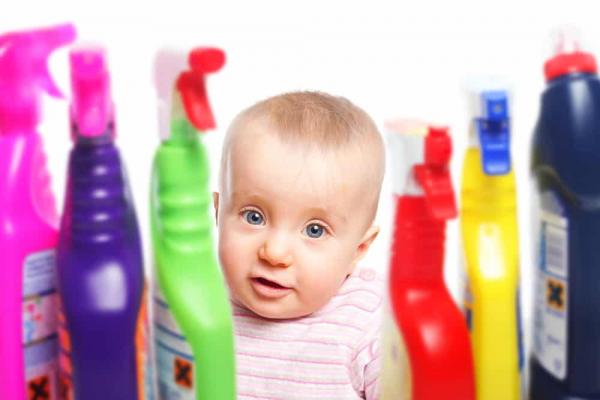
Poisoning is currently the leading cause of accidental injury in the United States. While most poisonings are typically preventable, they still yield extremely dangerous and potentially deadly repercussions, if not properly attended to.
To help raise awareness and promote poisoning prevention, the United States has been observing National Poison Prevention Week since March 1962. National Poison Prevention Week, which occurs the third full week of each year, strives to arm individuals with information on how to be proactive in preventing accidental poisoning and exposure to toxic chemicals and substances. However, it's up to you to take the steps to keep your own home safe.
Consider taking the following steps to improve the safety of your at-home environments:
1. Clean up your personal care routine
Conventional personal care products are often riddled with harmful ingredients and petrochemicals. Under current federal law, chemicals used in home products don't have to be tested for health and safety. It's important to seek out brands that abide by product safety testing. This leads to many products making it to market and, in turn, being recalled due to harmful or negative effects on consumers. Be sure to keep up-to-date with different recalls and safety ratings.
2. Check your cleaning and household product labels
Common household products often contain a myriad of potentially toxic chemicals, such as bleach, ammonia and lead. You should always be aware of the integrity of the products you're purchasing and using around your home. Often, chemicals and toxins found in products are not harmful when used independently. However, in combination, these chemicals and toxins can become harmful and in some instances life threatening. Consider switching to natural and plant based products if you find that your household cleaner and products contain chemicals.
3. Investigate whether or not your home possesses dangerous materials or substances used in its foundation and fixtures.
Today, people are generally aware that typical household toxins like asbestos and radon exist, but few understand the prevalence of their occurrence within homes. Asbestos is a proven cause of mesothelioma, a rare cancer affecting the lining of the lungs and abdomen. Its use has decreased rapidly since the 1970s but still exists in things like insulation and drywall. The only way to be sure your home is free of asbestos is to have your home tested by a certified professional.
Radon, like asbestos, also poses a threat of causing cancer. It is, in fact, the second leading cause of lung cancer in the United States. An estimated 1 in 15 homes is affected by high levels of radon. Fortunately, you can easily detect radon through testing kits. These kits are user-friendly and available to purchase at home improvement stores.
With new products and materials breaking into the American market so prevalently, it is now more important than ever, to be aware of the composition of products you're using. Always remain educated to keep you and your loved ones safe.
Sign up here for our weekly FamilyShare email and get more of the stories you love.

